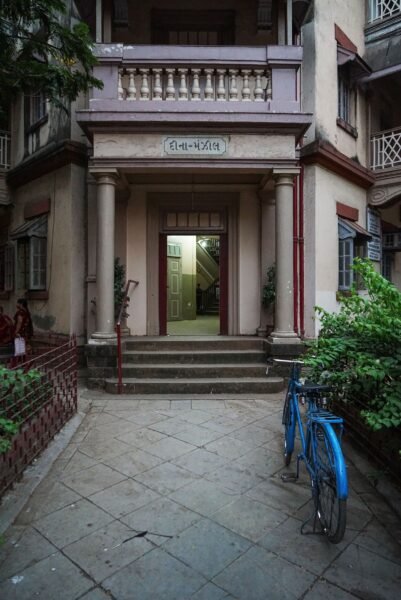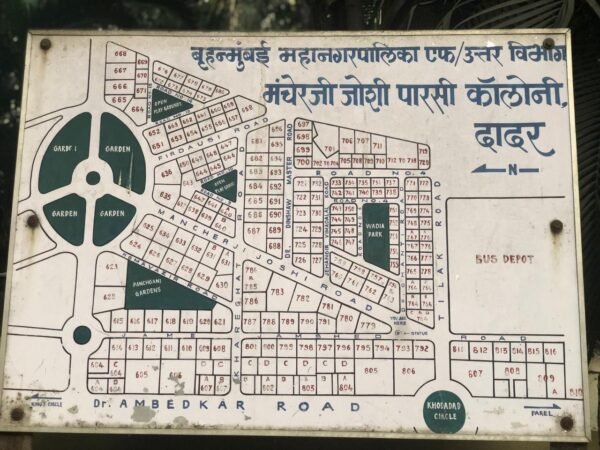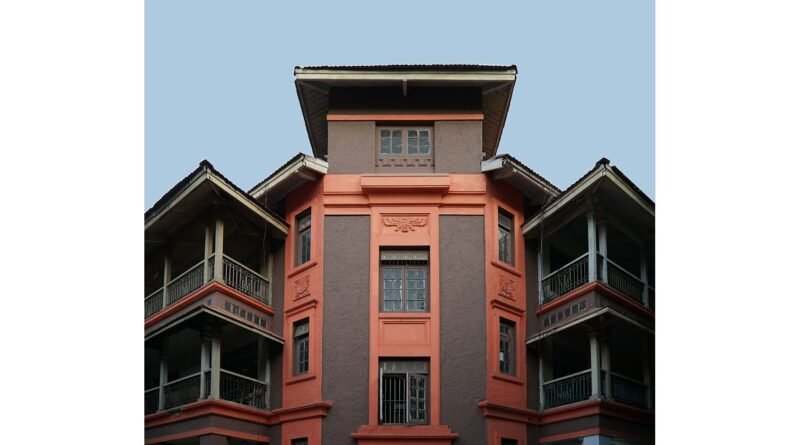Dadar Parsi Colony: Cherishing the Bombay that was
Inflatable pools, barbecues, open backyards…this is how architect Rooshad Shroff recalls the better part of his childhood spent with his parents in the Dadar Parsi colony. With the endless lockdowns, he realises how deeply he misses this oasis of bliss in the heart of Mumbai. “I certainly took the greenery for granted. You simply can’t beat it. There are almost fifteen beautiful gardens organically woven into the layout of the colony,” says Shroff.


The colony was established in the wake of the bubonic plague in the early 1920s which had also ravaged countless lives in Mumbai. The British were then compelled to expand the city limits to demarcate open, hygienic living spaces in the Dadar-Matunga area. And Mancherji Edulji Joshi’s tireless efforts to have more than a hundred plots dedicated to middle-class Parsis paid off. “This is the only master plan colony in Mumbai designed around sustainable community ideals and we owe a huge debt to Mancherji,” says Jimmy Mistry, CMD Della group. Mistry moved to the colony in the early 90s and he recalls how the civic tenets that the cities of India aspire towards now, were always respected in the colony. “Even in the 90s this was a hawker-free zone, the roads had to be compulsorily clean, and segregation of wet and dry waste was the norm,” he recalls. For Shroff, playing volleyball with his brother in one of the gardens of the colony is a memory he still holds close to his heart. He notes how the design of the colony is humbling because most of the houses, particularly the original ones, are hardly more than two or three storeys. “It is a nurturing space,” says the AD100 architect. “Whenever you are there, you will always feel like you are stuck in a time capsule and for all the right reasons. We never had traffic jams, incessant honking, or any of the other nuisances you would associate with a sprawling metropolis like Mumbai.”
The moment you enter the colony, its wide roads greet you. The canopy of the trees leave no more than a square foot of land exposed to sunlight and, life just seems to have slowed down for the better. I meet Kayomi Engineer in the Rustom Tirandaz park, barely a stone’s throw away from the colony’s famous Five Gardens area. She’d recently worked to identify restoration projects for the non-profit Kala Ghoda Association and is now working on her two-decade-long dream project of documenting the life and magic of the colony for her upcoming book. “The need for conservation of these places has gone through a different mindset post-Covid-19. It is no longer about conserving some old and pretty buildings. The colony is the largest living Zoroastrian enclave of Persians anywhere on the planet—this is one of the main things I am going to use to appeal to UNESCO—because this is what makes us unique,” explains Engineer. She also manages the only Instagram page dedicated to highlighting the beauty of the colony through vivid pictures @mancherjijoshiparsicolonydadar. Although the space has always been preserved because of the consistent efforts of people like Engineer, she believes that particularly since the past three years the colony hasn’t looked prettier—all thanks to the conscious efforts of the community with cooperation from the city administration.

“History has certainly moulded us and brought us to where we are, but history can only do so much,” she says. “There is now a greater need for preservation of such living spaces.” Engineer credits the architectural robustness of the buildings as they were originally planned and constructed for this longevity too. “The inherent sturdiness definitely helps; although, for a while, people had forgotten our architectural beauty. It’s like walking into a place that had slowly begun to resemble a ruin and then there is this beautiful makeover.”
Even from a civic point of view, Dadar Parsi Colony is special. Mistry tells us that almost all the plots of lands are covenanted—ownership could be with anyone but only Parsis can stay in the properties. “Alberta Park in Bandra is also a covenanted land for Catholics. My own building is built on a covenanted plot. This is the only way you can retain micro-communities together, otherwise, there is mindless fragmentation.” Mistry had worked for the welfare and restoration of the local fire temple or Agyari and its priest with his NGO. This was a defining moment for him on a personal and professional level. “I realised then that there is no point in messing up with the originality of things. You cannot tweak original designs. Particularly in our colony where there are so many sacred symbols which mean deeply to us–one simply cannot be overly enthusiastic about it all,” he says.
The majestic Della Tower, built almost a decade ago and owned by Mistry, exemplifies the marriage of modern Parsi sensibilities while still adhering to the larger design language of the colony. When you enter the lobby, you are greeted with the replica of an ancient Zoroastrian inscription that admonished slavery—it depicts the King standing on a slave owner and letting the slaves walk towards freedom. “You can build as modern a tower as you want, but you’ve got to be sensitive of the cultural milieu you are building it in,” Mistry insists.

It is heartening for Engineer that someone as respected as architect Phiroze Panthaki still resides here, while the Rustomjee-TREC project to build the locality’s first residential green tower, Garden 6, is again emblematic of the larger cultural value of the colony. So titled because it will also feature the sixth garden of the locality—vertically. “You realise this will always be home,” says Engineer. “You can’t trade this for anything. It’s like what Rooshad told you—the colony will always have a place in the hearts and minds of anyone who has been here for even more than an hour. Why would I not want to live and grow up in a place like this?”
Engineer, with photographer Kuber Shah, is also attempting to document the seasonal changes of the Colony. The place comes alive beautifully in different seasons. It is a carpet of the vividly yellow flowers of the bahwa trees during winters, and the monsoons simply underline all the textures that would have been otherwise lost. “For lack of a better phrase—it is our own little utopian Alice in Wonderland,” she says, smiling. Just then, the Agyari bell rings and Engineer pauses for a moment. It is almost 6 PM. This bell marks the change of the day. So, when the bell rings, the idea is to just pause for a moment and be mindful.
There are numerous lessons that our colonies and even gated communities can draw from this place. Because it was built in response to the plague, the roads are wider and the houses are equally spaced. “If Mancherji could build Mumbai’s first and only master plan colony back in the 1920s, what’s stopping us? The colony exemplifies every single principle of sustainable living— you won’t find a single overflowing tank anywhere and you dare cut a tree,” says Mistry. For Shroff, the distribution density ratio of land to people is simply astounding. “You can’t find it anywhere. This allows better light to percolate in our houses. Even the average ceiling height of our houses, including my own parent’s house, is anywhere between 16-18 ft,” he says. Even the postmen who are allocated the area are grateful. “They are jubilant when they get posted here. That says something about the kind of people we are and the magic that is the Dadar Parsi Colony,” she says. Every two blocks, we are greeted by old Parsi couples waving at Engineer and us with all the warmth in the world. She wishes one of them a belated happy birthday and the gentleman is all smiles. Perhaps this is what one takes away from this oasis—the smiles and the promise of a fulfilled life.

The story of the largest Zoroastrian enclave of Persians in the world, that speaks of resilience, intimacy, and community-oriented growth
By Arman Khan
Photography by Kuber Shah
Source: Click Here





